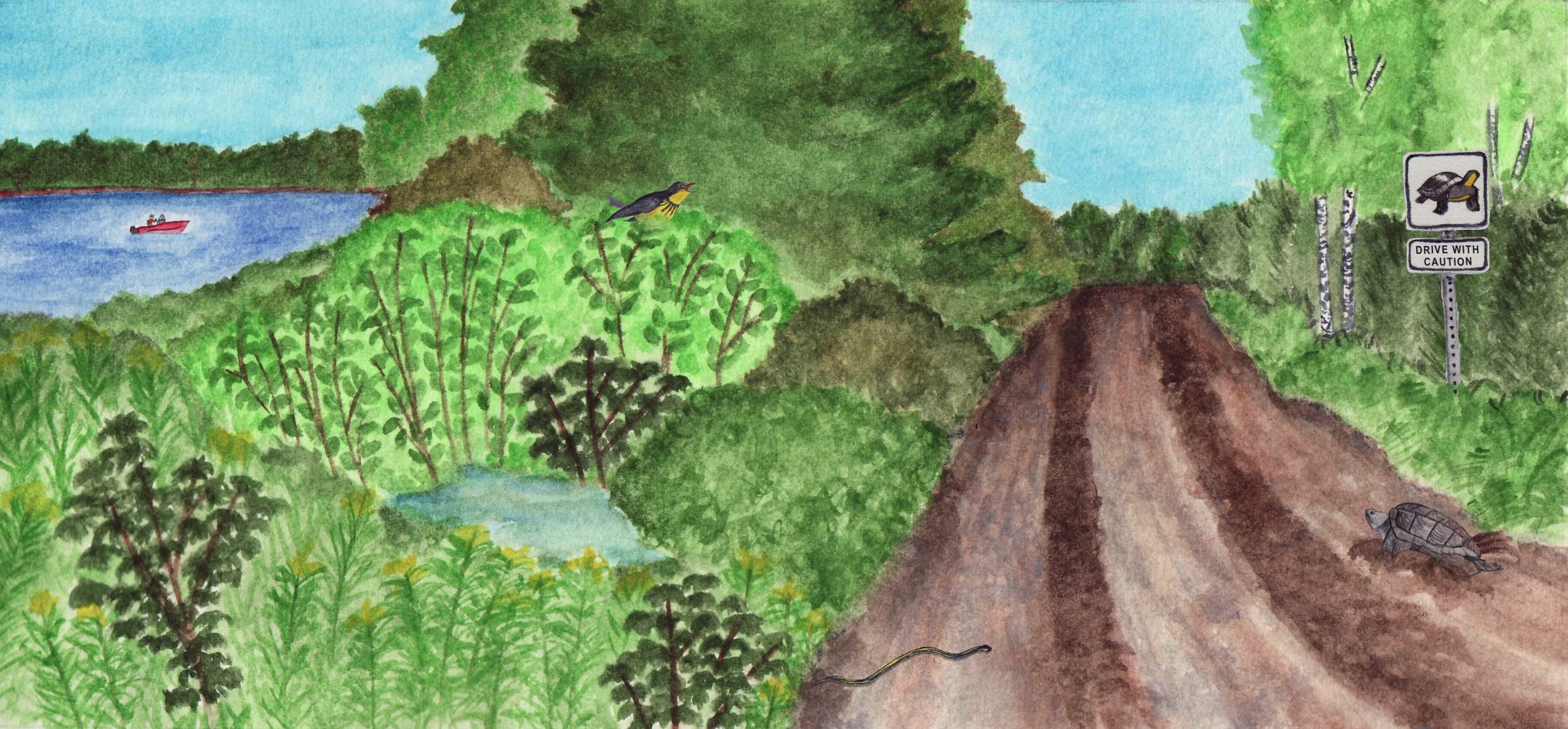
Motorized vehicles allow us to visit remote natural areas in Nova Scotia. They can take us to places that would otherwise be difficult to easily access. Unfortunately, if we are not careful they can also harm wildlife, the environment, and ourselves. There are ways that we can responsibly use motorized vehicles that reduce these negative impacts.

Report oil spills of any size immediately to the Coast Guard.
Call 1-800-565-1633; note the source, estimated quantity of the spill, and if it is on land or water.
AUTOMOBILES:
Keep an eye out on highways, roads, and trails for wildlife.
Road mortality affects creatures large and small (insects, amphibians, birds, mammals) and snakes and turtles are among the unfortunate victims of road mortality. Turtles can cross the road at any time; however, you are more likely to encounter adults on the road in June and July and hatchlings from September to November.
Drive with caution and look out for Blanding’s Turtles when you see these signs.
Large blue signs mark the edges of the known Blanding’s Turtle range, while smaller white signs are placed where turtles have been observed. The white signs will be displayed in the early summer and fall when turtles are more likely to cross the road and it is important to keep an eye out for them. Blanding’s Turtles do not mature until they are 20-25 years old and the loss of one adult turtle can have a big impact on the population. Hatchling turtles are small and difficult to spot and are run over every year.
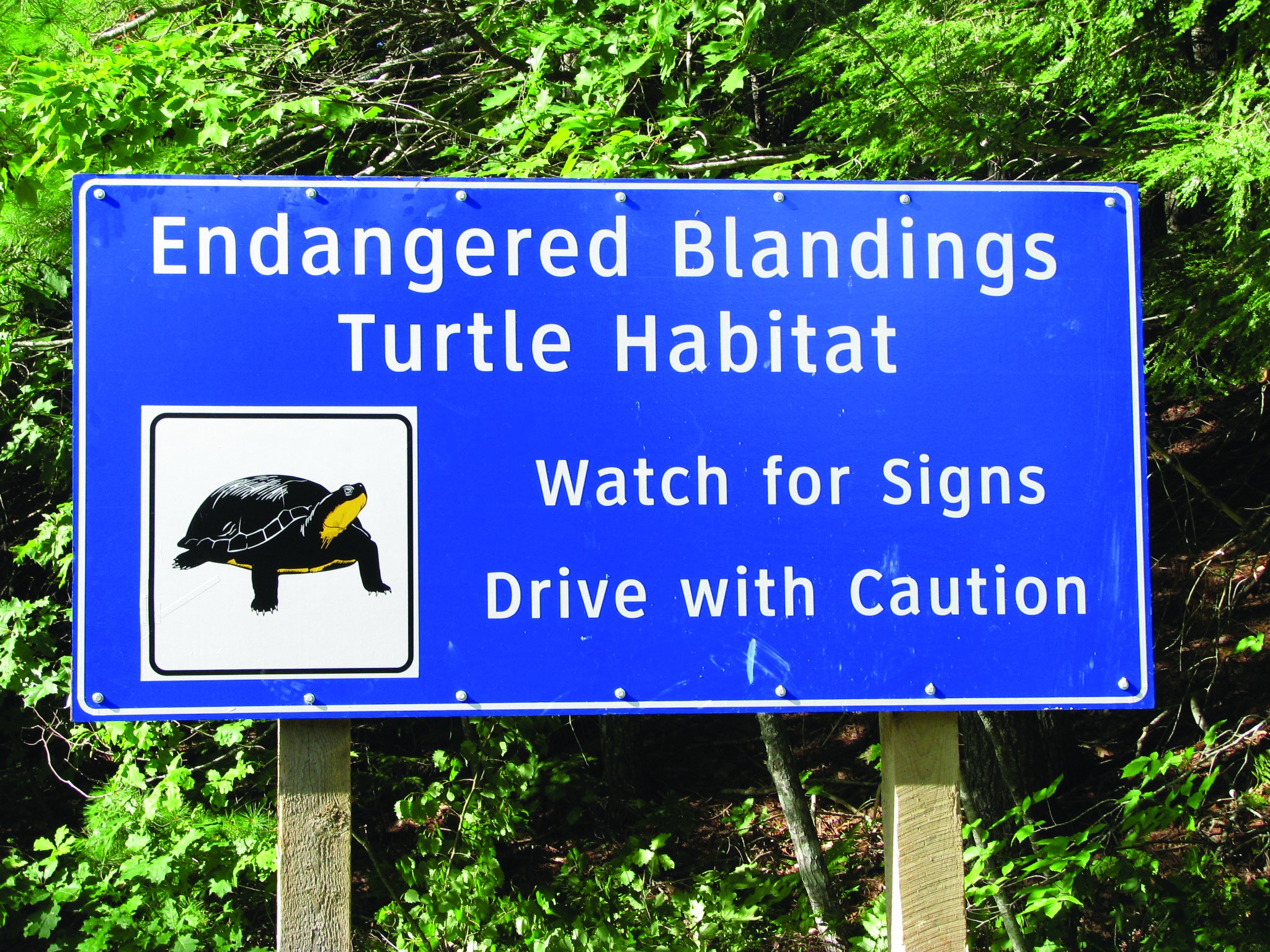
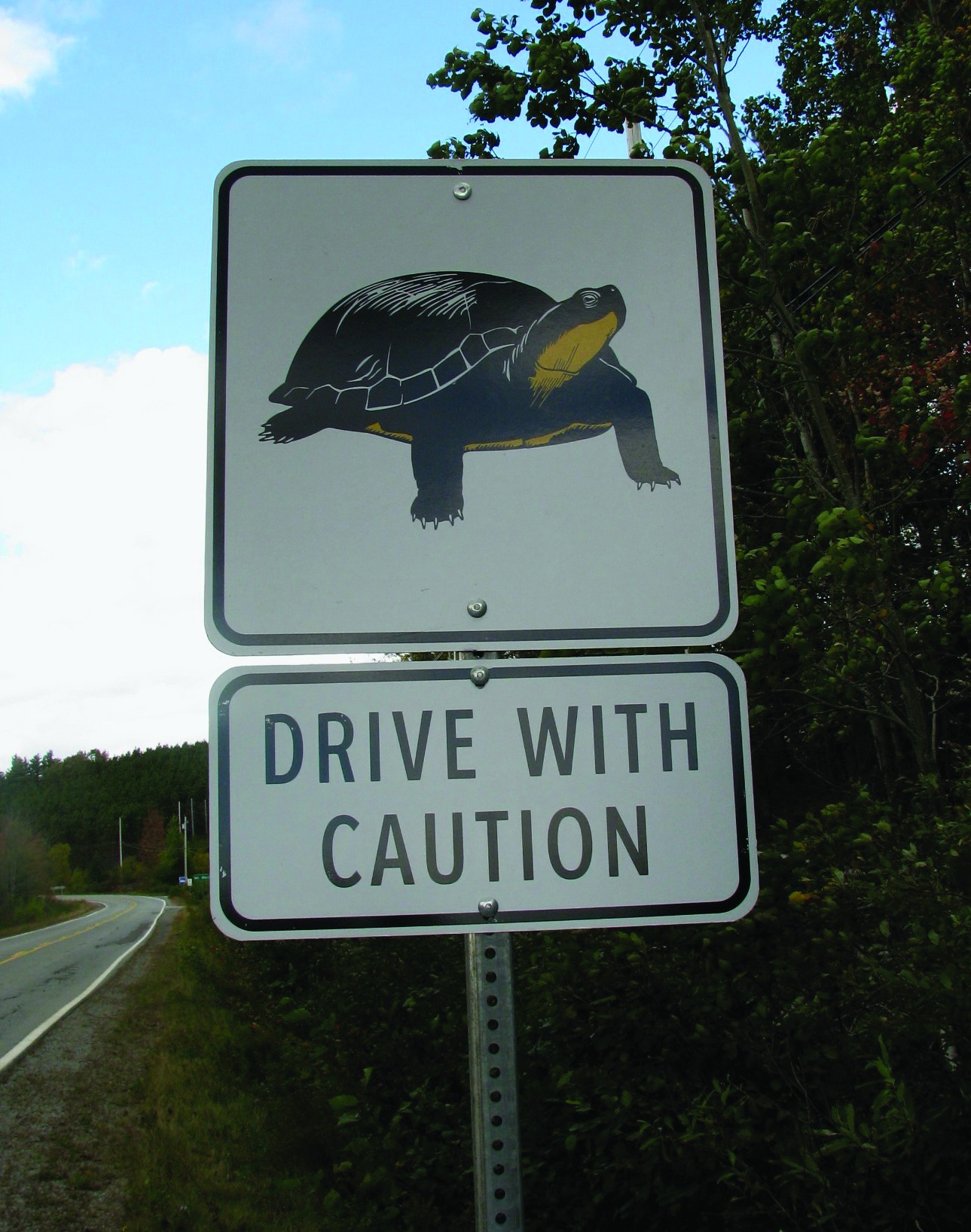
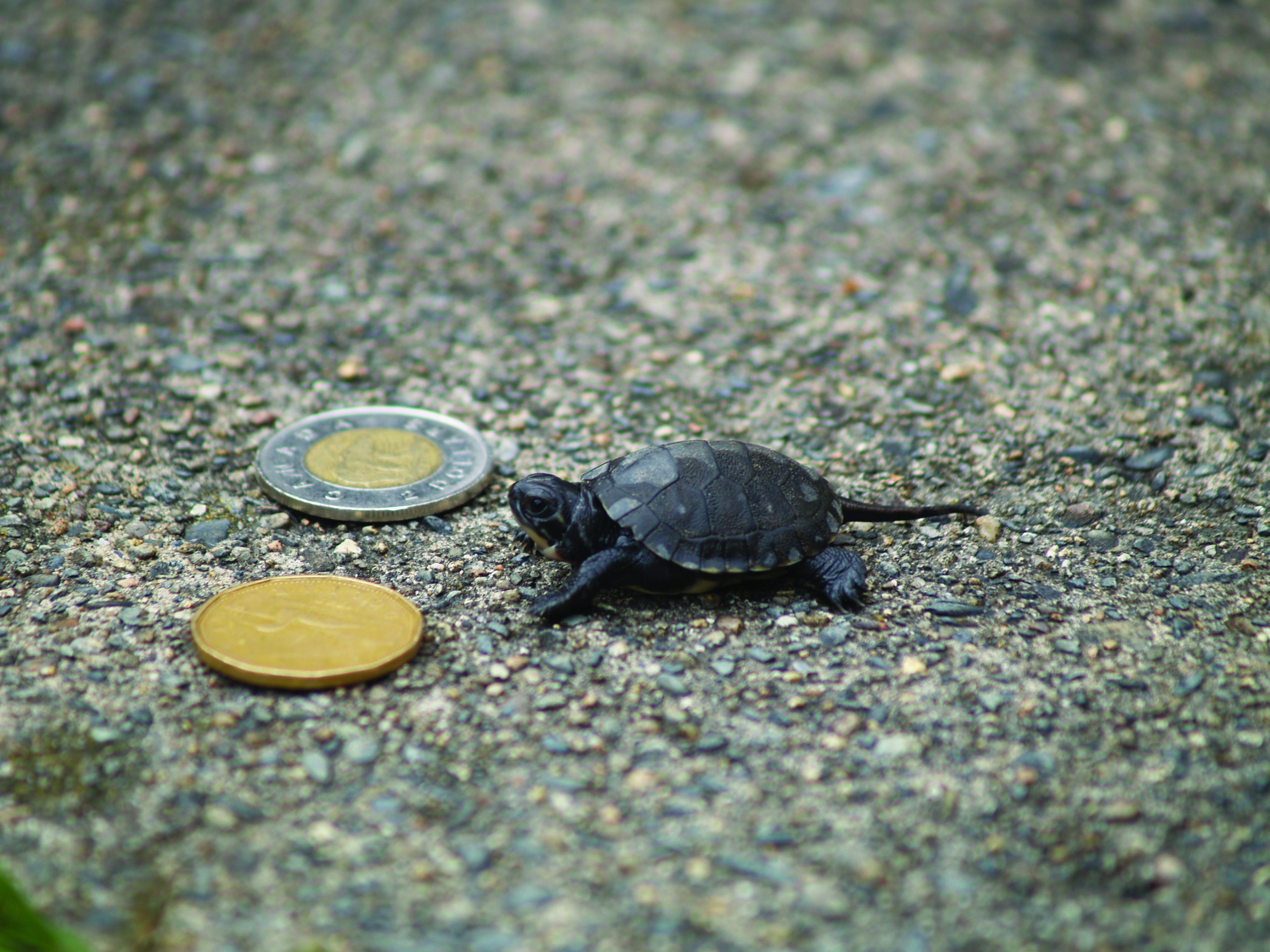
Move turtles off the road in the direction they were travelling.
Female nesting turtles are often encountered on the road in May and June during the nesting season. If it is safe, lend a hand, and move turtles off the road in same the direction they were headed. Do not pick them up by their tails because this can cause serious harm. Painted and Blanding’s Turtles can be picked up by securely holding them in the middle with a grip on both the top and bottom of the shell. Snapping Turtles require more caution but there are a number of safe handling methods that can be learned by visiting YouTube to watch a video by Toronto Zoo titled “How to help a Snapping Turtle Cross the Road.”
 PCA.jpg)
.jpg) Blanding's Turtle laying her eggs A nest cover protecting Blanding's Turtle eggs from predators
on the edge of the road
Blanding's Turtle laying her eggs A nest cover protecting Blanding's Turtle eggs from predators
on the edge of the road
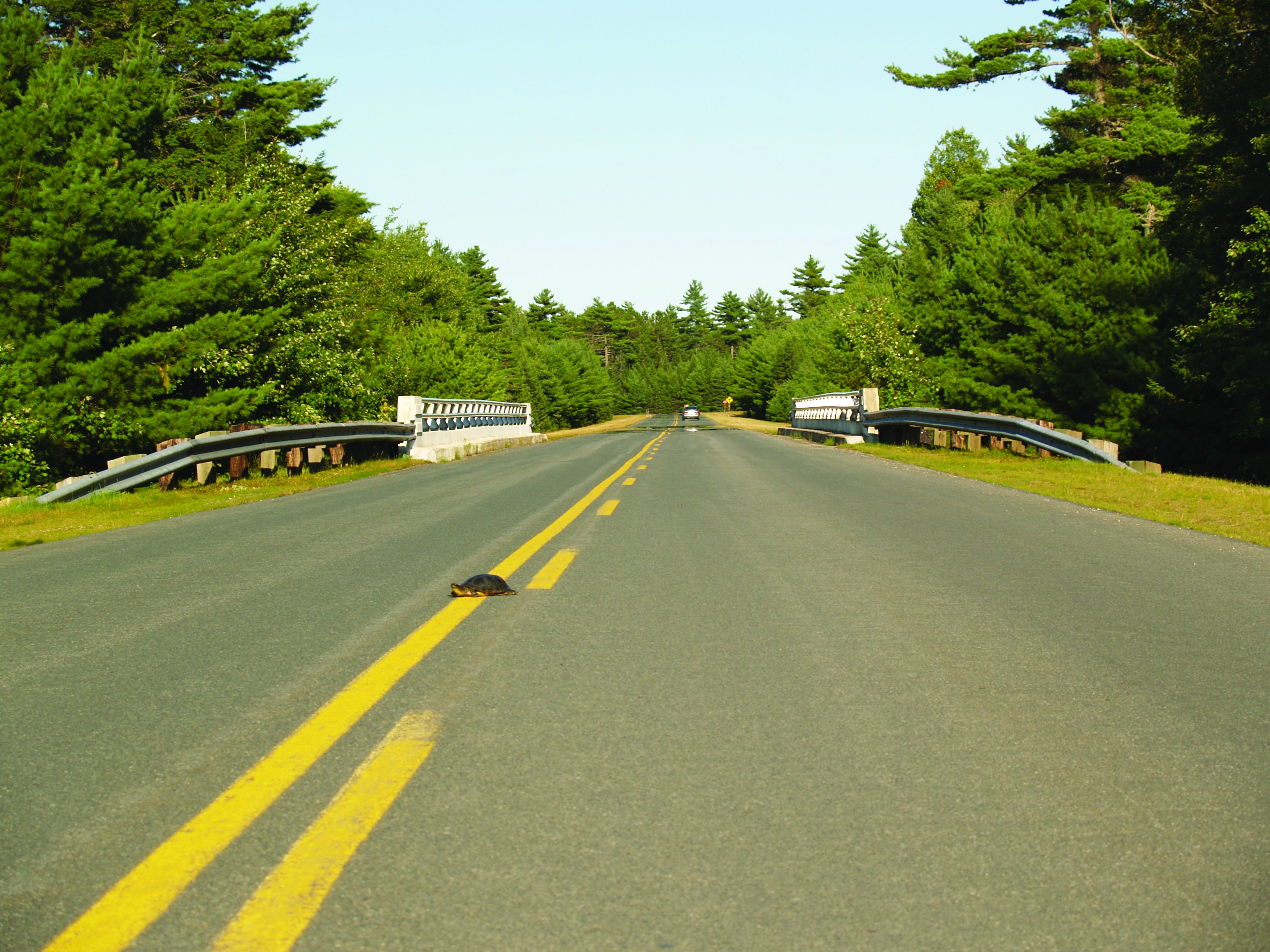
 Adult Blanding's Turtle in the middle of the road Helping a turtle cross the road
Adult Blanding's Turtle in the middle of the road Helping a turtle cross the road
OFF-HIGHWAY VEHICLES:
Limit use to designated trails. Never ride off-highway vehicles along lake shorelines, rivers, or in wetlands.
The Off-highway Vehicle Act does not permit off-highway or all-terrain vehicle use in sensitive habitats such as wetlands, rivers, lake shorelines, sand dunes, beaches, and barrens. Fines for driving in these habitats range from 500 to 2000 dollars. Call the Department of Natural Resources (1-800-565-2224) if you observe anyone driving off-highway vehicles in sensitive areas. Visit the lake shoreline and wetland sections for more information on the effects of vehicle use on wildlife habitat.
Off-highway or all-terrain vehicle use is generally prohibited in protected areas such as nature reserves, parks, and wilderness areas.
The Off-highway Vehicle Act does not permit off-highway or all-terrain vehicle use in protected areas such as wilderness areas, nature reserves, provincial parks, or in endangered species core habitat. To view a map of the protected areas in Nova Scotia, visit: www.gov.ns.ca/nse/protectedareas/map.asp
Respect all signs regarding speed limits and seasonal closures.
Choose vehicles with four-stroke engines and low impact tires.
MOTORIZED WATER VEHICLES:
Drive at speeds that do not produce a wake within 30 m (100 feet) of the shoreline.
Under Transport Canada’s Vessel Operation Regulations all power-driven vessels are required to move at speeds less than 10 km/h within 30 m (100 feet) of all river and lake shorelines in Nova Scotia. Wakes from vehicles like motorboats and personal watercraft can disturb wildlife species and erode shorelines, while motorboat propellers can tear up vegetation, hit wildlife, and increase sedimentation.
Use public access boat launches instead of creating a boat launch on your property.
Boat launches require extensive shoreline modification and a road to the lake. Public access boat launches are an easy alternative to avoid impacting the lake shoreline and water quality.
Do not drive motorized vehicles in shallow vegetated water.
Avoid areas where your boat can stir up lake bottom sediment, disturb wildlife, and tear up vegetation.
Refuel all detachable fuel tanks well away from the water.
Minimize fuel spills by using devices like funnels or fuel pumps and place fuel absorbent pads underneath the tank when refueling. Do not top-up or overfill your tank because fuel expands when it warms and could leak if your tank is overfilled. Prevent fuel leakage by keeping your engine well maintained.
Purchase an electric or four-stroke engine when replacing your motor.
Every year recreational boating is responsible for the release of millions of litres of fuel and oil directly into freshwater lakes. Two-stroke engines are inefficient and release 25-40% of their fuel directly into the water as unburned exhaust. Environment Canada found that driving 8,000 km in a car produced fewer emissions than running a 70 hp two-stroke motor for two hours! Four-stroke engines emit 80% less pollutants, are quieter, and require 40-80% less fuel – a good way to save money and help the environment.

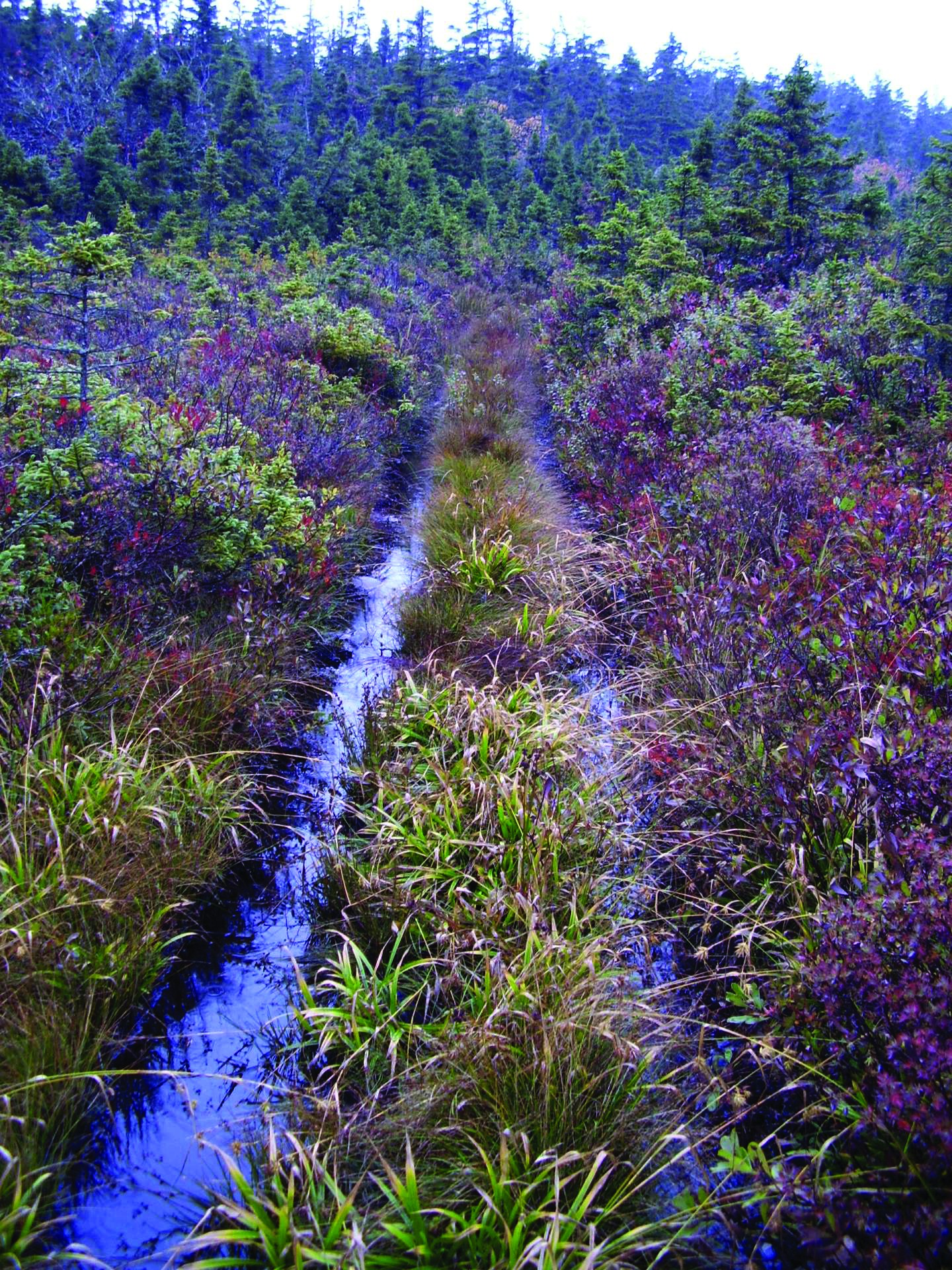
.jpg)
Aerial view of the damage from Off-highway vehicle tracks Eastern Ribbonsnake
vehicle use to a bog through sensitive bog habitat crossing the road
Resources:
Tread Lightly!
www.treadlightly.org
A non-profit organization dedicated to spreading the word about how to be a responsible outdoor enthusiast. Click on “education” and then “recreation tips” to learn ways to decrease your environmental impact while riding off-highway vehicles, hiking, fishing, mountain biking, and many more.




 PCA.jpg)
.jpg)




.jpg)


